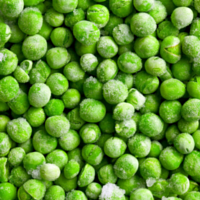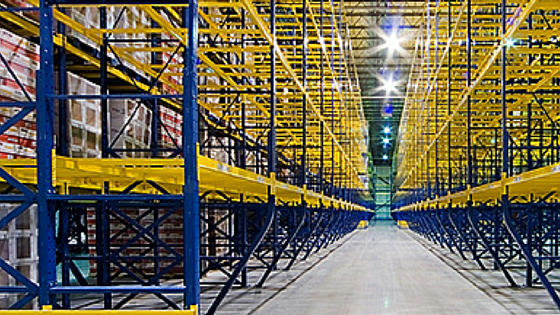Many food plants rely on freezers and refrigerators to store and ship their products. In last week’s post, I outlined four variables food processors must understand during process freezing. This week, I want to take a look at freezing methods and equipment, and the applications they’re best suited for. Depending on the type and quantity of food, certain freezers are more useful than others.
2 main freezing methods
-
Cryogenic freezing—This method involves spraying or immersing the food directly with liquid nitrogen or carbon dioxide. The product is frozen almost instantly, while the refrigerant is lost to the atmosphere. Cryogenic freezing equipment generally requires lower up-front capital costs than mechanical freezing equipment of the same capacity. However, cryogenic equipment requires significant volumes of refrigerant, which creates high ongoing costs for the producer. Also, cryogenic vapors are colorless and odorless, so care must be taken to ensure adequate ventilation is provided to protect workers from oxygen displacement.

Cryogenic systems are often used for individual food pieces, like frozen peas. -
Cryogenic freezing is most often used for individual quick frozen (IQF) products, such as individual chicken wings, frozen peas, or other bulk packaged food items where it is important to maintain individual pieces.
-
It is sometimes chosen where space is limited or as a lower-cost means of getting a new product to market quickly.
-
-
Mechanical freezing—This method involves a standard mechanical refrigeration cycle, using one of the common refrigerants like ammonia or carbon dioxide. Mechanical process freezing systems usually have higher capital costs than cryogenic systems because they require supporting refrigeration systems. But, they’re usually the more efficient and cost-effective option from a long-term standpoint.
-
Mechanical freezing is most often used for high-volume production of both raw and finished goods.
-
Freezer types and their applications
Some freezers are better suited for certain applications than others depending on product type, process conditions or quantity. To ensure the best quality product, it’s important to choose the freezing equipment that creates the most efficient freezing process for your specific product. Below are several types of freezers and their typical applications:
-
Process freezer—Process freezers are typically incorporated into the manufacturing line, usually situated just before the end-of-line packaging equipment.
-
Individual Quick Freeze freezer—IQF freezers can be mechanical, but are most often cryogenic systems. They’re ideal for protein served in small pieces such as diced ham, wings, meatballs or shrimp. They can also be used for fruits and vegetables and prepared foods like pizza or pasta.
-
Spiral freezer—Spiral freezers can be either mechanical or cryogenic, and move the product around a spiral conveyor inside an insulated enclosure for a certain amount of time.
-
Tunnel freezer—Tunnel freezers work in the same fashion as spiral freezers, but they move the product linearly, rather than in a spiral pattern.
-
-
Plate freezer—A plate freezer is a special hollow plate that has liquid refrigerant flowing through it. Products are placed between two plates and evenly cooled to freezing temperatures. These freezers are ideal for flat products or brick-shaped packaged products, such as frozen meals.
-
-
Blast freezer—Blast freezers are mechanical systems generally used to freeze products in bulk on pallets. Blast cells are not part of the manufacturing line like process freezers. The food is sealed in a blast cell and remains there for multiple days as cold air is continuously circulated throughout the room.
When selecting the proper freezing equipment, it’s helpful to work with a refrigeration equipment provider to determine which system is best suited for the specific product. Often times, food plant owners can work with providers to create a custom-designed system to fit their needs perfectly.
If you’d like to learn more about different types of freezers and their applications, email me at foodforthought@stellar.net.




Morning Randy,
We are manufacturing plant producing Donuts from raw material to end product. Currently operating a mechanical spiral blast freezer system. I wish to inquire information, expert advice regarding cryogenic freezing and its possible application within our business.
Any product information available on the subject would be greatly appreciated.
Regards
Sherilyn TeMiha
Production Supervisor – Allied Pinnacle
Hi Sherilyn,
Thanks for your comment. Stellar is a global leader in food plant design and construction, and one of our core strengths is industrial refrigeration system design and construction. That includes an excellent track record of designing and building process freezing systems for all kinds of food and perishable products. While we do not manufacture cryogenic freezing equipment, we would certainly include it in a process design where it is the best choice for the business.
If your donut line(s) already have a spiral freezer that uses mechanical refrigeration, chances are you already have the most cost-efficient system for the business. Mechanical refrigeration systems are costly, but over time provide the lowest freezing cost. Cryogenic freezing is usually the lowest cost way to get into the business of freezing, and can be done relatively quickly. However, the daily use of nitrogen (sometimes carbon dioxide) is expensive, and can drive product costs out of range.
The exceptions are cases where the investment is short term, or cases where the fastest available freezing method preserves the quality traits necessary for the product. For example, a new product launch that is planned to take advantage of a market trend that is expected be short lived could benefit from the lower first-cost of cryogenic freezing if the profit margins are there, and/or getting to market quickly is very important.
Stellar can help you evaluate your process to determine which freezing method is best. We can also provide expert analysis on mechanical freezing systems to eliminate problems or optimize energy use and throughput.
Please let me know if you’d like more information, and we’d be happy to get in touch!
Thanks,
Randy
Which would you recommend being best for frozen food (dessert) applications? What are the lowest achieveable freezer temperatures?
Thank you.
Hi Frank,
The best freezing method for frozen foods depends on the product and the manufacturing process.
Generally speaking, the faster the product is moved through the latent heat zone and below +20°F, the better for preserving quality measurements like flavor, freshness, texture or moisture retention. In a few cases, the consumer likely can’t tell the quality difference between rapid-frozen and slow-frozen. For those instances, blast cells (the slowest method) are sometimes the best choice. For frozen desserts, I’d avoid slow freezing.
The lowest achievable temperatures would be with cryogenic freezing methods.
Of course, Stellar can help analyze, recommend and select the best options depending on your particular needs: our in-house process design team can help you determine what solutions you need, and our refrigeration, design and construction teams can assist with the solutions you already know you need. Our Food & Beverage division regularly designs, builds and renovates processing facilities, too.
Feel free to give us a call if you’d like to chat through it some more: 904-260-2900.